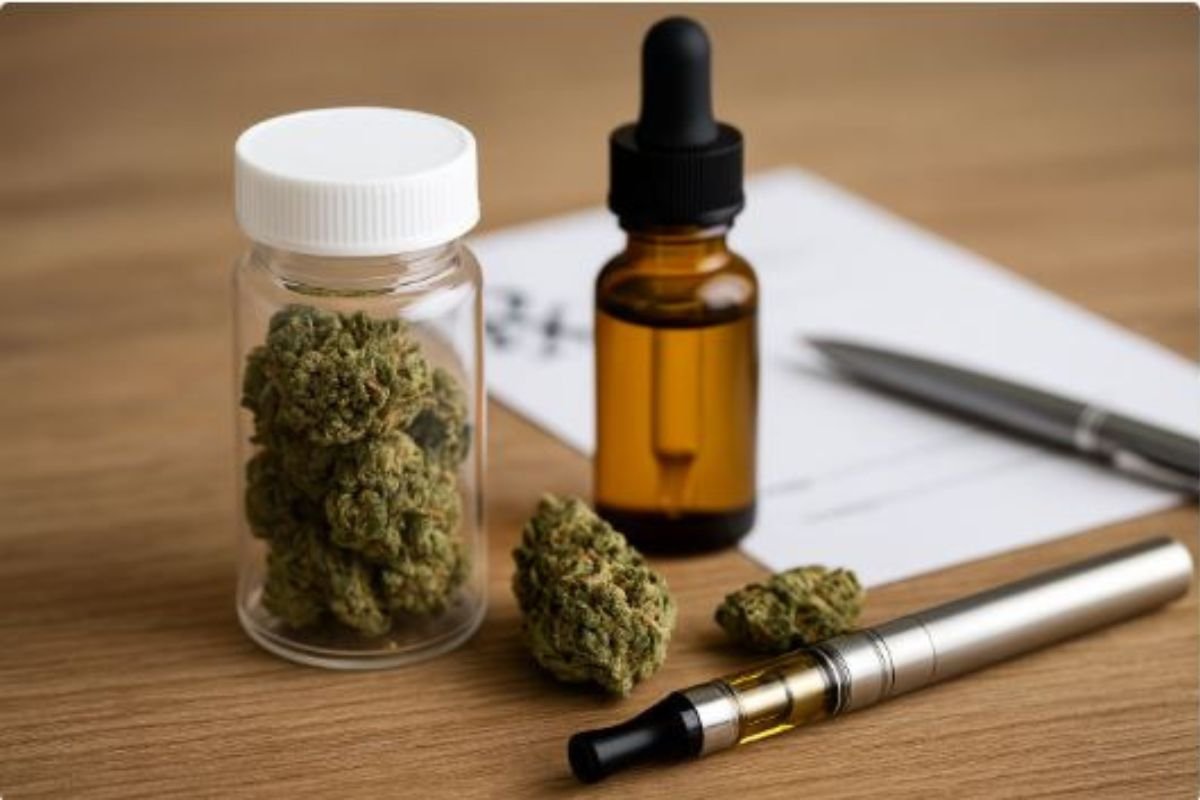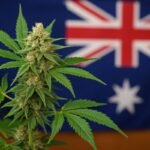
In Australia, medical cannabis (medicinal marijuana) refers to cannabis-derived medicines prescribed by doctors to treat specific health conditions. The federal government legalized the cultivation, production, and medical use of cannabis in October 2016, enabling patients to legally obtain cannabis medicines under strict regulation.
According to the Therapeutic Goods Administration (TGA), “you can legally get medicinal cannabis products from a pharmacy with a prescription from a doctor or a nurse practitioner”. In practice, this means a patient must see an authorised prescriber, and the medicine can only be dispensed by a pharmacy.
Each state and territory has its own rules, but all allow prescribed medical cannabis access. Accessing these therapies requires a formal medical process (see below), and any unregulated purchase (e.g. from a non-pharmacy online store) is illegal.
Medical Cannabis Australia: Legal Status and Regulations
- 2016 Legalization: In October 2016 Australia changed federal law to permit cannabis for medicinal use. This opened the door to clinical research and patient access under government oversight.
- Prescription Requirement: The TGA mandates a valid prescription from an authorised medical practitioner (doctor or nurse practitioner) for any cannabis-based medicine. This includes all forms (oils, capsules, sprays, flowers, etc.), whether CBD-dominant or THC-containing.
- State-by-State Rules: Each state/territory implements its own regulations on how prescriptions are handled, but patients nationwide can obtain medical cannabis via a doctor prescription. For example, South Australia allows prescriptions from authorised practitioners dispensed in pharmacies, just like in other states.
- Import/Growing Restrictions: It remains illegal to grow your own cannabis for any use (except a small allowance in the ACT) and illegal to import cannabis products from overseas, even with a prescription. Only approved products can be brought in under a tight “traveller’s exemption,” and imports from non‑pharmacy online retailers are prohibited.
Patients and clinicians should stay updated, as regulations evolve. The TGA provides guidance and publishes lists of approved and available products. Always consult official sources or your doctor for the latest rules.
Access and Prescriptions
Accessing medical cannabis in Australia involves a structured medical pathway:
- Doctor Consultation: First, discuss your condition with your GP or specialist. The doctor will evaluate if conventional treatments are insufficient and whether cannabis could help. Many patients ask, “Is medical cannabis right for me?” The answer depends on individual medical history. Only a qualified practitioner can decide if you meet the criteria.
- Special Access or Authorised Prescriber: If the doctor supports it, one of two routes is used:
- Special Access Scheme (SAS-B): Your GP applies to the TGA under SAS Category B. This requires submitting a brief justification for the prescription. Approval usually comes quickly (often within a couple of days).
- Authorised Prescriber (AP): Alternatively, the GP may refer you to a specialist cannabis doctor or clinic. Some specialists are already authorised prescribers; they can write a prescription immediately without separate TGA approval. If not an authorised prescriber, they will apply via SAS-B on your behalf.
- Prescription Issuance: Once approved (either by SAS-B or as an AP), the doctor issues you a medical cannabis prescription. You receive a treatment plan and prescription detailing the product, dose, and usage instructions.
- Pharmacy Dispensing: Take the prescription to a registered pharmacy. Most pharmacies must order in your cannabis medicine from suppliers – these products aren’t kept on the shelf. Your pharmacist will verify approvals (TGA and state health department) and arrange delivery. Some pharmacies even offer home delivery services.
Clinics specializing in medical cannabis (including telehealth services) can also guide patients through these steps. Telehealth consultations are increasingly common, providing convenience and privacy. Importantly, all legal pathways require approval; bypassing this (e.g. buying from a non-registered online seller) risks breaking the law.
Medicinal Cannabis Products and Strains
Australia offers a wide range of cannabis medicines to suit different needs. According to the University of Sydney’s Lambert Initiative, products can vary in active ingredients (THC vs. CBD), strength, and format. Key points:
- Registered (Approved) Medicines: Only two cannabis-based medicines are fully registered on the Australian Register of Therapeutic Goods (ARTG): Sativex (nabiximols) spray and Epidyolex (pure CBD). Sativex (an oromucosal spray) is approved for multiple sclerosis spasticity; Epidyolex (oral solution) is approved for certain childhood epilepsy syndromes. These are prescribed like conventional drugs (PBS partly covers Epidyolex).
- Unapproved (Special Access) Products: Nearly all other medical cannabis products are “unapproved” medicines that require SAS or AP approval. Prescribers select from many unregistered products (oils, capsules, flowers, etc.), and the TGA maintains up-to-date lists of available formulations. Inclusion on the list means a licensed supplier has reported it; doctors and pharmacists use these lists to choose products by ingredients and strength.
- Forms of Products: Medicinal cannabis comes in numerous forms:
- Oils and Tinctures: The most common form. Cannabis extracts in oil or liquid can be taken orally or sublingually (under the tongue) for easy dosing. Products may be CBD-only or contain both CBD and THC. Oils often allow precise dosing and longer-lasting effects.
- Capsules/Tablets: Pre-measured capsules or pills provide convenient dosing, similar to traditional medicine. They usually contain either CBD only or a fixed CBD:THC ratio.
- Sprays and Lozenges: Oromucosal sprays (like Sativex) and lozenges dissolve in the mouth. They offer moderate-onset absorption and can be discreet.
- Dried Flower (Bud): Medical-grade cannabis flower is available (usually under SAS/AP). Patients can inhale this via approved vaporiser devices. Because vaporising provides rapid relief, it’s often used for breakthrough symptoms. Only TGA-approved vaping devices (e.g. Mighty Medic, Volcano Medic, Syqe Air) are permitted for medical use.
- Topicals and Patches: Creams, balms, or transdermal patches infused with cannabinoids are used for localized pain or skin conditions. They contain varying CBD/THC levels but avoid systemic effects, so patients typically don’t feel “high.”
- Other Forms: Less common preparations include oils in capsules (soft gels), suppositories, and novel formulations.
Image: Dried medicinal cannabis buds (flower) ready for vaporisation. Vapable cannabis provides rapid symptom relief and is one of the delivery methods used in Australia.
- Cannabinoids (THC/CBD): The two main active compounds are THC (psychoactive) and CBD (non-psychoactive). Products may contain mostly CBD, mostly THC, or both. Doctors choose based on the condition: e.g., high-CBD formulations for epilepsy, balanced CBD/THC for chronic pain, and higher-THC products when sedation is needed.
- Strains and Effects: Cannabis subspecies (Sativa, Indica) and hybrids influence effects. Sativa-dominant strains often produce more energizing, uplifting effects, while Indica-dominant strains tend to be more relaxing or sedating. In practice, Australian prescribers may favor Sativa strains for daytime use (e.g. for fatigue or anxiety) and Indica strains for evening use (e.g. for sleep or pain). However, most products today are hybrids bred for specific cannabinoid/terpene profiles.
The medical cannabis product list in Australia is extensive, covering dozens of brands and formulations. Clinics or pharmacies usually provide patients with a tailored list after approval. For example, our website’s medical cannabis product list (including oils, capsules, and vaping cartridges) helps patients compare options and learn about each product’s strengths. (Always ensure your doctor verifies the product’s quality and approval status.)
Cost and Affordability
Medical cannabis is generally expensive, since it’s largely accessed through private channels. The TGA explicitly advises patients to “check the price” of products, noting that “the cost of treatment may be expensive in some cases”. In fact, Australians often search for the “cheapest medical cannabis in Australia”, but prices depend on the manufacturer, cannabinoid content, and supply chain. There is no government-fixed price.
- Pricing Factors: Brand, product form, potency (THC/CBD levels), and ordering fees all affect cost. For example, bottled oils or capsules might range from tens to hundreds of dollars per prescription quantity. Vaporising devices or dried flower are typically costlier due to equipment and potency.
- PBS and Subsidies: Only one cannabis medicine is government-subsidised: Epidyolex (a CBD oil for epilepsy) is listed on the Pharmaceutical Benefits Scheme. All other products must be paid out-of-pocket. The TGA has no control over these prices.
- Finding Lower-Cost Options: Some clinics or pharmacies may suggest generic brands or patient assistance programs to reduce costs. Occasionally, manufacturers run patient support schemes or provide samples. Patients should discuss budgets with their doctor or pharmacist. In summary, while patients may seek “cheapest medical cannabis Australia”, the safest advice is to compare legitimate suppliers and look for certified product options rather than unregulated cheap sources.
Clinics, Telehealth, and Online Access
Australia has a growing network of medical cannabis clinics and telehealth providers. These specialize in education and prescribing. Key points:
- Local Clinics vs. Telehealth: There are specialized clinics in major cities (e.g. Sydney, Melbourne, Brisbane) that handle prescriptions and follow-up. Telehealth services allow patients in regional or remote areas to consult online. Both must adhere to TGA rules.
- Choosing a Provider: Look for clinics with qualified doctors (GPs or specialists) who understand cannabis medicine. They will guide you through the SAS/AP process. Our clinic’s website can help patients find experienced prescribers.
- Online Purchases: Important: You cannot legally buy medicinal cannabis from overseas websites or unverified online stores. The TGA warns that purchasing from any online seller other than a registered Australian pharmacy is illegal. Even reputable international vendors are not permitted; imports for personal use are barred. Instead, once you have a prescription, your Australian pharmacy will order the approved product.
Medical cannabis vape Australia: If your doctor prescribes vaporised cannabis, you’ll need both the cannabis (often dried flower or specialized oil) and a compatible vaping device. Only TGA-approved devices may be used. Pharmacists can often advise on obtaining these devices. Vaping is popular for its fast onset, but always follow your prescriber’s guidance on dosage and device use.
State Variations: South Australia Focus
While the federal framework is uniform, each state applies additional controls. For instance, in South Australia like other states, patients can access medicinal cannabis on prescription from an authorised practitioner and have it dispensed by a pharmacy. SA Health confirms that the Commonwealth scheduling (pharmacist-only or prescription-only) applies, and doctors prescribe under SAS or AP pathways. In practice, South Australian patients follow the same process described above, with local health department notification. Always check with a local GP or SA Health for any state-specific updates.
BUY HERE SOME PRODUCTS
Frequently Asked Questions
Q: Is medical cannabis legal in Australia? Yes. At the federal level, cannabis for medical use was legalized in 2016. It is legal when prescribed by a doctor under approved schemes. Recreational use remains illegal nationwide.
Q: Who can prescribe medical cannabis? Any registered doctor or authorised nurse practitioner can prescribe it after assessing you. Typically your GP submits a TGA application (SAS-B) or refers you to a specialist. If the doctor is an Authorised Prescriber (AP), they can prescribe immediately. Otherwise, the GP applies for approval first.
Q: What conditions can medical cannabis treat? There is no exhaustive official list. In practice, doctors may prescribe it for conditions where conventional treatments failed. Common examples include chemotherapy-related nausea and pain, certain drug-resistant epilepsies (especially in children), chronic non-cancer pain, multiple sclerosis symptoms, and palliative care support. These uses are based on TGA guidance and clinical judgement.
Q: Can I buy medical cannabis online? Only through the proper channels. You cannot legally purchase it from overseas sites or unregulated online sellers. Instead, after getting a prescription, a local Australian pharmacy will order your medicine. Home delivery or mailing by the pharmacy is allowed once approved.
Q: What forms does medical cannabis come in? Many forms: oils, capsules, sprays, dried flower, and topical creams are all available. Oils (sublingual drops) and capsules are most common for daily dosing. Vaporisable flower or cartridges are used for rapid relief. The full product list is extensive – for example, clinics and the TGA list include dozens of oils with various CBD/THC ratios.
Q: What about costs – is there a “cheapest” option? Prices vary widely. No single product is designated cheapest. The TGA advises patients to “check the price of products” and discuss costs with their pharmacist. Only one medicine (Epidyolex CBD) is subsidised by the PBS. All other products require private payment. Patients often shop around or choose lower-THC, higher-CBD formulations to manage cost.
Q: How do I find a medical cannabis clinic or doctor? You can start with your regular GP for advice. Many patients then get referrals to specialised clinics or telehealth services. Clinics like [YourClinicName] provide consultations and can explain the product range. State health departments and the TGA have resources, and organizations like the Alcohol & Drug Foundation have referral info. Always ensure the service follows TGA rules.
Conclusion
Medical cannabis in Australia has come a long way, offering new hope for patients with chronic conditions. The market is growing rapidly (an estimated US$740 million in 2024, projected to nearly double by 2033), reflecting rising patient demand and regulatory support. However, accessing cannabis medicine requires navigating regulations: you need a doctor’s prescription via TGA pathways, and must use approved products and devices.
For patients, this means education and professional guidance are key. Our website provides a comprehensive medical cannabis product list and expert resources to help Australian patients understand their options. Whether you’re in Queensland or South Australia, our clinic can assist with eligibility, prescriptions, and product selection.
In summary, medical cannabis Australia is legal and increasingly accessible, but only through the proper medical channels. Always consult with a qualified healthcare provider about risks, benefits, and the legal process. Stay informed, and if you found this guide helpful, please share it and contact us with your questions.


